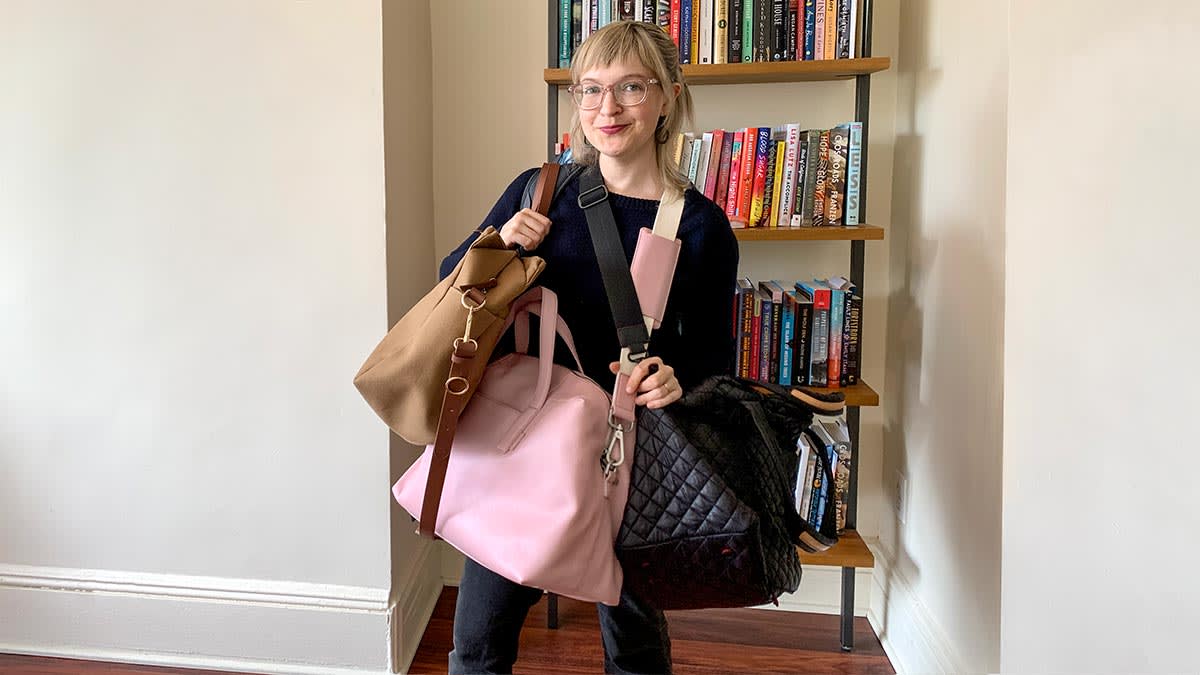We evaluated these duffel bags from a variety of angles.
Does it fit within airline carry-on size limits? Though a duffel bag may often be deployed on weekend trips powered by cars or trains, a good one should play double duty as a carry-on, which means it needs to fit within particular sizing metrics. Though maximum carry-on dimensions vary from airline to airline, generally speaking, most airlines require that carry-on bags be no larger than 22x14x9 inches (HxWxD). They’re soft-sided, so assuming they’re not completely full, they can be squished to fit airline dimensions. To play it safe, our top picks stay within this range, and if one doesn’t, we make a point of calling that out.
Does it seem well-made and durable? Luggage gets a lot of wear and tear. A good duffel bag should have quality construction, with heavy-duty hardware and straight and flawless stitching. It should be made from a fabric that’s resistant to tearing, and it should be able to withstand some moisture, in case you get caught in the rain or have a spill inside the bag. “At the high end, leather is the best choice,” says Ellen Lynch, a professor of accessories design at the Fashion Institute of Technology in New York City. “It is soft, supple, and conforms well to the items on the inside. Canvas and ripstop nylon are both really good materials, both durable and easy to handle.” Cotton is less supportive and won’t wear well, she says.
“The zipper is critical, too, and is often the thing that breaks first,” says Susan Sokolowski, a professor of product design at the University of Oregon in Portland.
Plastic zippers are durable and flexible, so they can stretch and rebound with an overstuffed bag. When a plastic zipper tooth breaks, however, the zipper usually needs to be completely replaced. Metal zippers are less flexible but also easier to fix in a pinch by threading through the broken tooth to shorten the zipper.
Is it comfortable to hold and carry? In addition to having handles, duffel bags should also be designed to hang from the shoulder or across the chest. That way, you can move quickly and comfortably across a sprawling airport terminal or sling it over your shoulder for shorter distances, like running to your car or a taxi.
Straps shouldn’t dig uncomfortably into shoulders, and carrying the bag shouldn’t cause back pain (unless you plan to be carrying bricks or potatoes, in which case I advise you to invest in some adjustable dumbbells in advance). Your bag shouldn’t press uncomfortably into your back or hips, and you should be able to lift it into an overhead bin or a high shelf without it flopping all over the place, which can happen with longer duffels with soft bottoms.
Does it have good organizational features? Packing cubes are great, but ideally, a good duffel bag should make packing and organizing your stuff easy without them. When it comes to pockets, “nothing is superfluous,” Lynch says. Look for “places to put your phone and other things that you need right away on the outside of the bag, and an inside pocket for either your laptop or other items, and enough room to store your clothing and toiletries without fear of any spillage.” Our favorite duffel bags have several clever, useful pockets for stashing items such as shoes, a smartphone, a water bottle, and dirty laundry.
Does it come with a good warranty, return policy, and repair policy? When you’re spending $150-plus on a bag, it should last for years—and if it doesn’t, the company that made it should do something about that. A high-quality bag should come with some kind of promise that if it falls apart on you after six months, the company will either replace or repair it.
Source link
